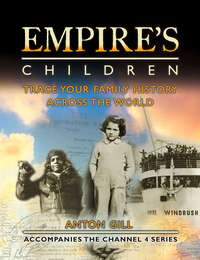Empire’s Children: Trace Your Family History Across the World

Полная версия
Empire’s Children: Trace Your Family History Across the World
Язык: Английский
Год издания: 2019
Добавлена:
Настройки чтения
Размер шрифта
Высота строк
Поля
Конец ознакомительного фрагмента
Купить и скачать всю книгу




